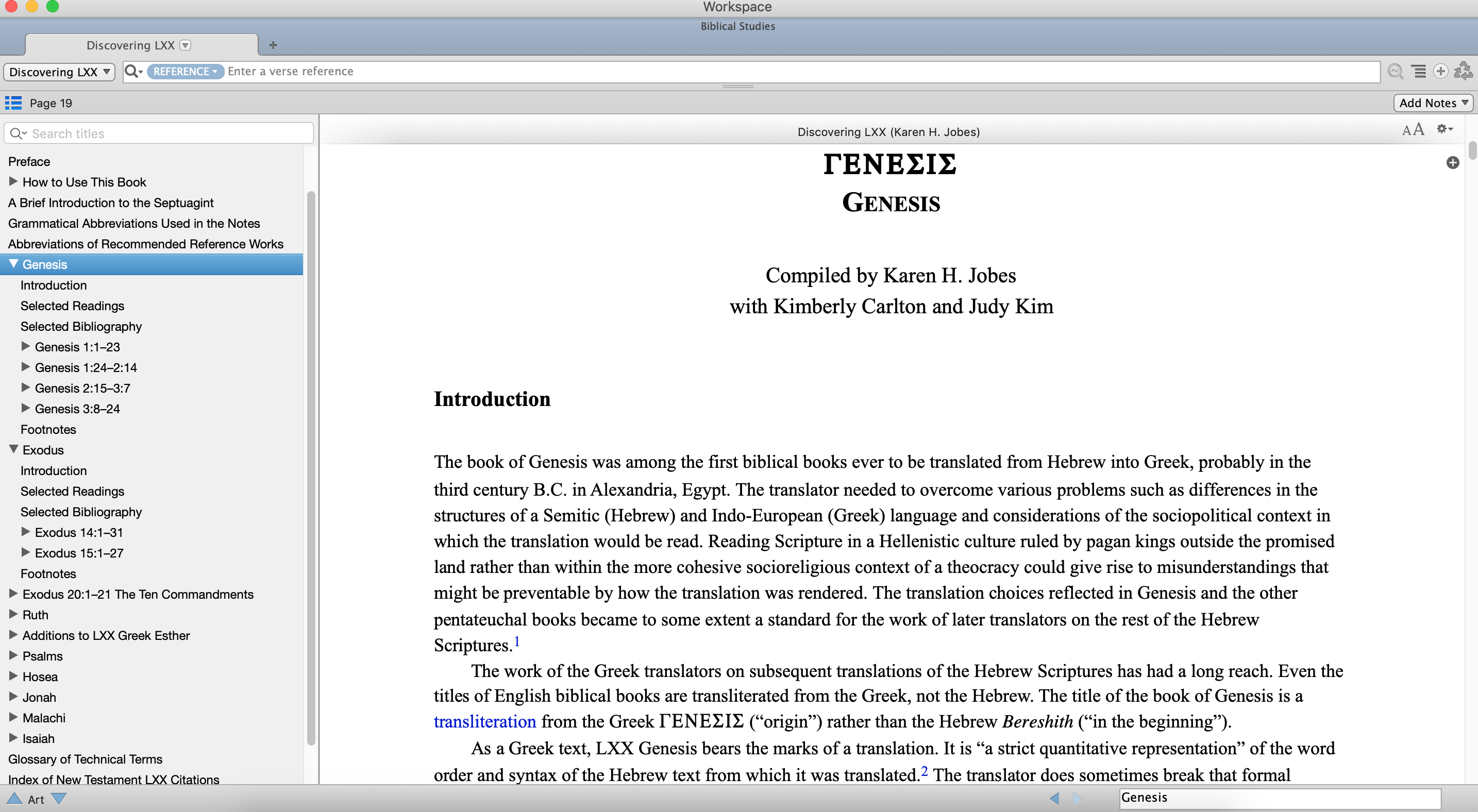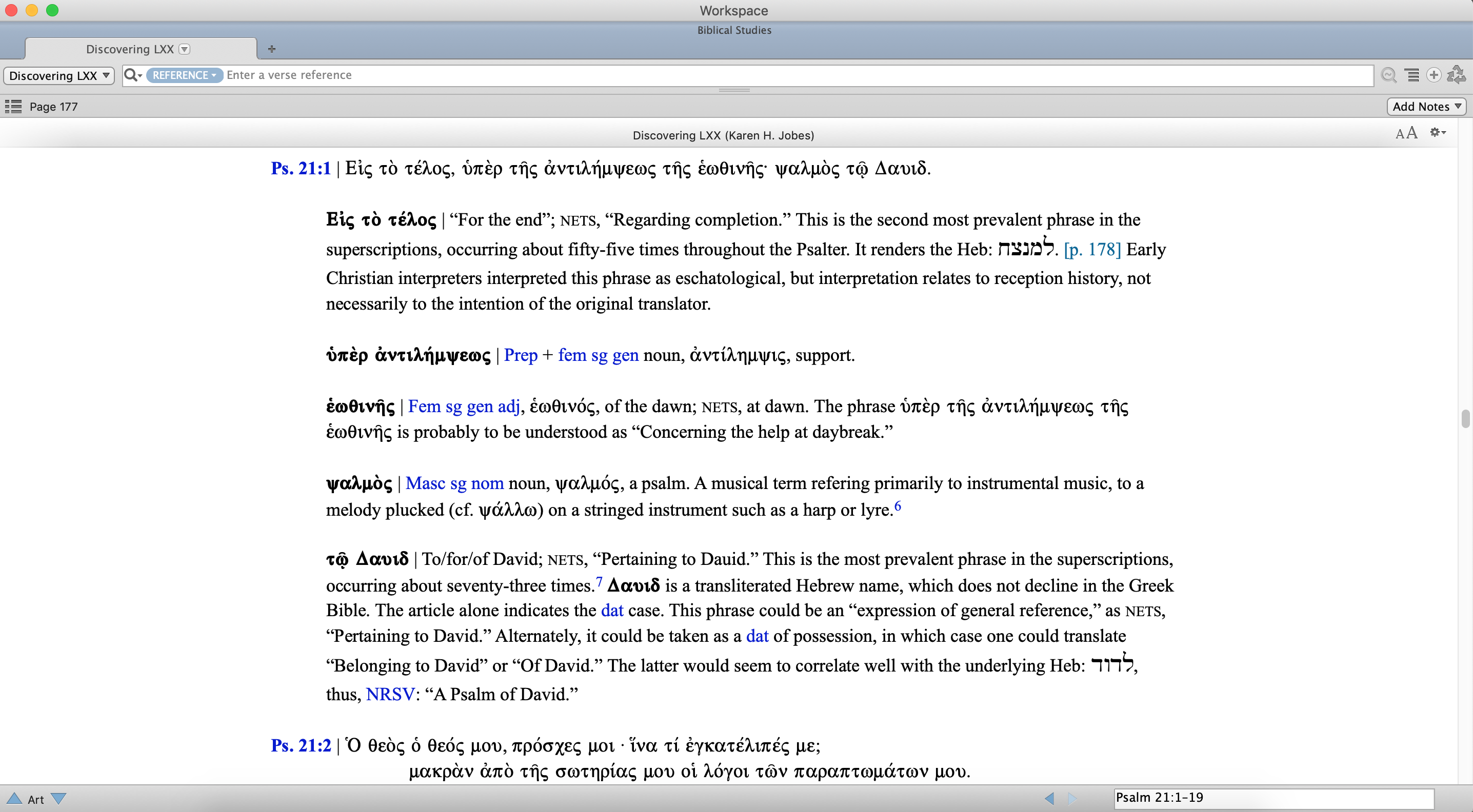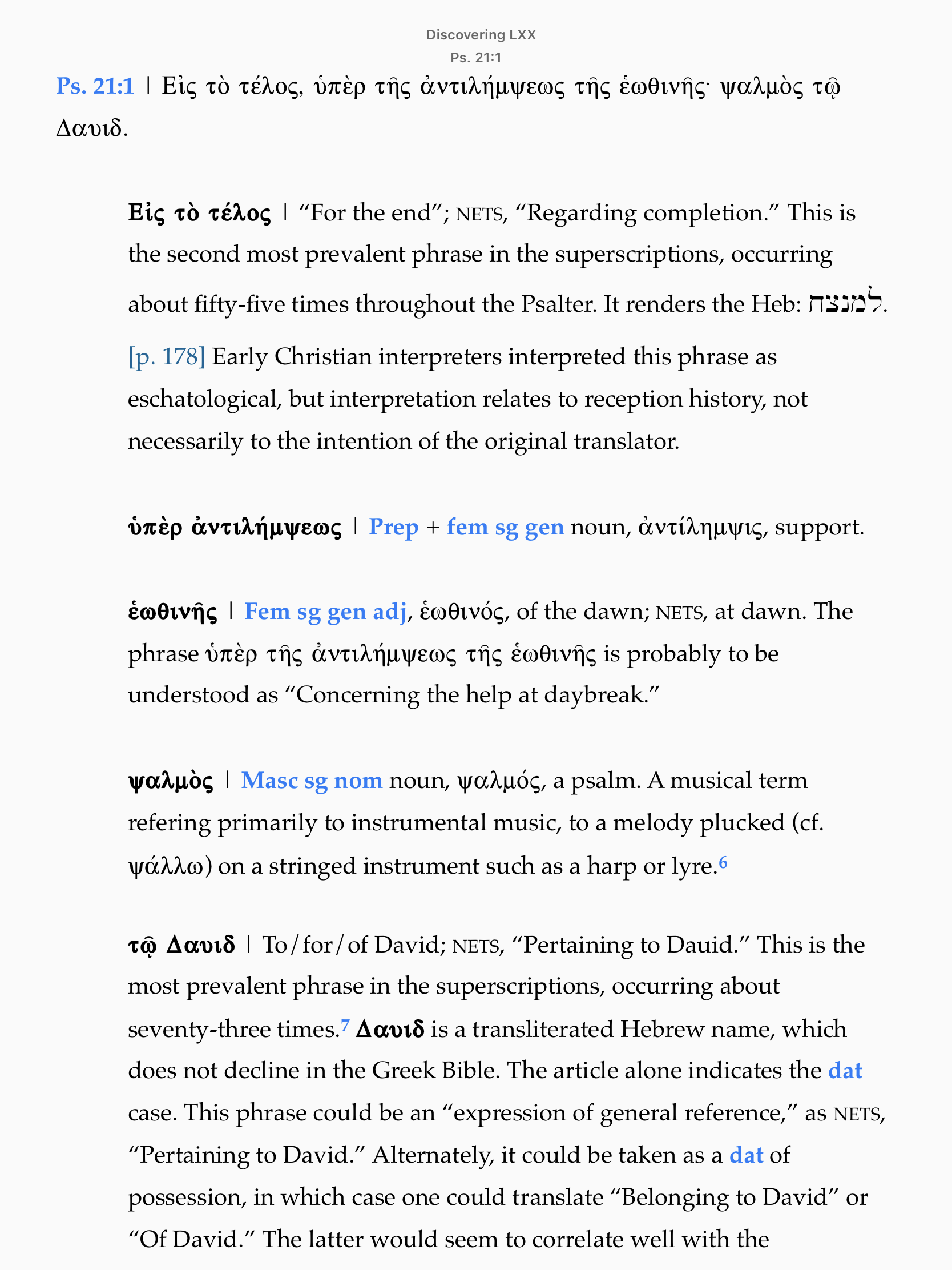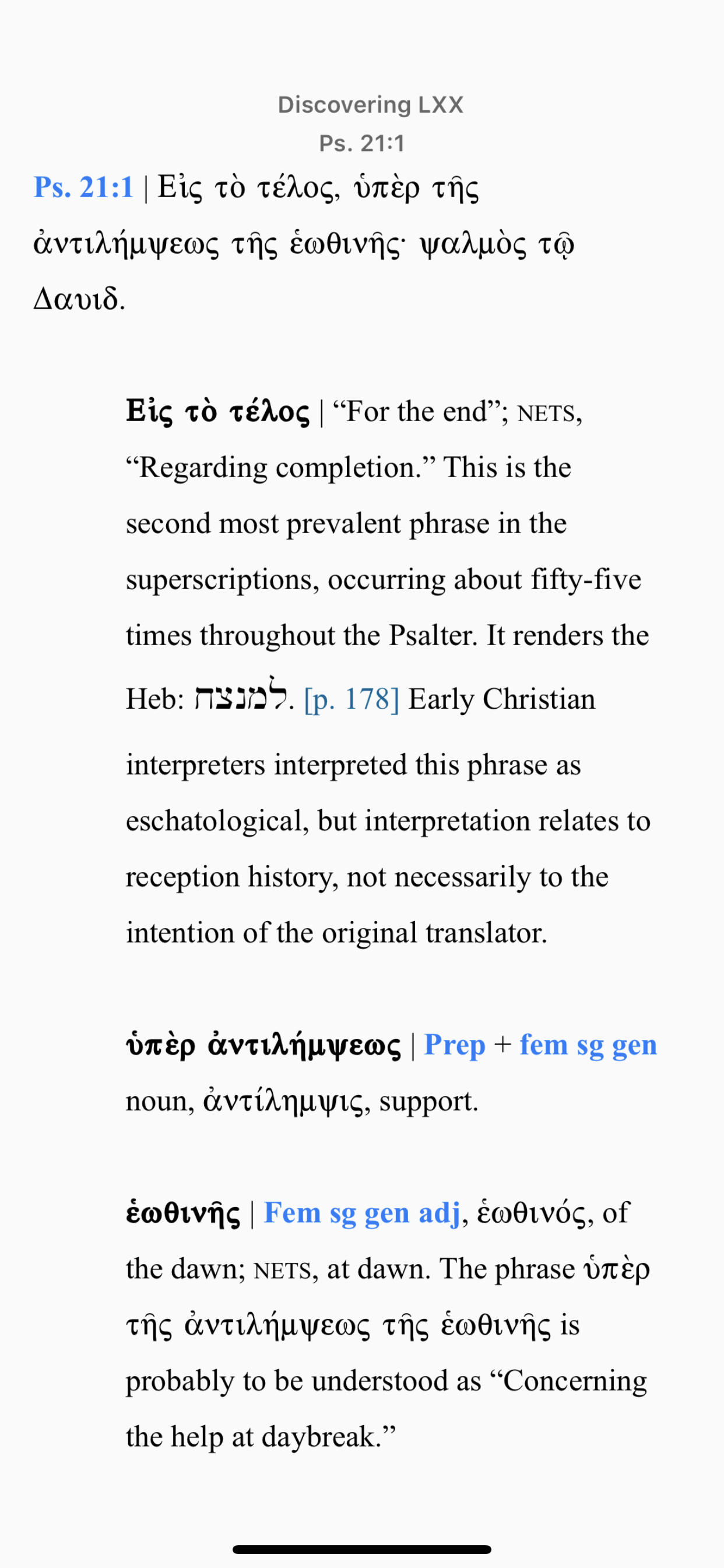
There is nothing exactly like Discovering the Septuagint: A Guided Reader (DLXX). This resources is aptly titled because it isn’t just a “reader’s edition.” It is a guide to reading the Septuagint. Reader’s editions of the Bible typically provide only vocabulary and parsing helps. Working through DLXX is like sitting down and reading with someone that has experience. As you read together, a whole host of topics are covered. The majority of the conversation focuses on what you need most, vocab and parsing helps, but there are also comments that speak to the underlying Hebrew, comments about the similar uses of words or phrases in other LXX passages, comments related to syntax, suggestions for translation, and more. Despite the fact that Hendrickson published a full, two-volume Septuagint Reader’s Edition this month, the variety of comments offered in DLXX makes it a unique, helpful resource for students who have only a little experience reading Greek.
What’s Included

Every portion of the print book is included in the Accordance edition of DLXX. As the picture above shows, the table of contents pane, which can be shown or hidden, allows you to easily navigate to all the front and end matter and each passage in between.
DLXX includes readings from Genesis, Exodus, Ruth, Additions to LXX Esther, Psalms, Jonah, Malachi, and Isaiah. When someone picks up a Septuagint — whether Rahlfs’ edition or the massive two-volume reader’s edition — it’s common to ask, “Where should I start?” DLXX is helpful at this point. Karen Jobes explains,
The texts were selected to give readers a taste of different genres, an experience of distinctive Septuagintal elements, and a sampling of texts later used by writers of the New Testament. It is intended to aid students who have had at least three semesters of koine Greek begin to read the Greek Jewish Scriptures as found in the Rahlfs-Hanhart critical edition of the Septuagint.
The Septuagint is huge and its contents are so varied and vast. I appreciate that DLXX allows readers to experience some of this variety.
Regarding the Notes
I’ve only had a little time to spend with DLXX so far, but I can say that I do indeed think the notes will help students move from the New Testament to the Septuagint. I learned to navigate the Septuagint during years of PhD seminars, but I was not so fortunate with classical Greek. For classical, the work of Geoffrey Steadman has served as my “guided reader.” Up to this point there has been nothing like Steadman for biblical studies. I think DLXX takes a step towards meeting this need.
Each section starts with an introduction to the book and a bibliography for further reading. At the end of each passage, the NETS translation is included for reference.


In the section on Exodus 20:1–21, Carmen Imes has formatted the text so that the reader can easily see how the ten commandments passage in Exodus differs from the Deuteronomy account.
The textual notes below are based on the Exodus version, but differences in Deuteronomy are included in brackets. If the text in brackets replaces text appearing in Exodus, the replaced text is underlined. If a word or words from Exodus are lacking in Deuteronomy, the brackets enclose a dash [-] and the missing text is underlined. Other material in brackets is unique to Deuteronomy. The verses that precede and follow the Deuteronomy Decalogue have not been included here. The simultaneous presentation of both versions of the Ten Words should allow easier comparison.

One could say that this sort of formatting clutters the text and is distracting, but that would be to judge the work as though it were intended to be a pure reader’s edition. DLXX is not a pure reader’s edition, and so I think this feature is really nice.
I also appreciate how the editors comment on how certain LXX passages are used in the New Testament. Here is a screenshot of a chart that appears at the end of the Psalm 21 passage. I long-held on one of the hyperlinked NT passages to have the NT passage popup.

Regarding the Electronic Version
Because the notes for each verse are listed directly underneath the individual verses, the Accordance electronic edition is most easily read on a bigger screen. Here are screen shots of the same passage on a 15” laptop, a 10.5” tablet, and a 6.5” phone:



As you can see, some scrolling up and down would be required to see all the notes for Psalm 21:1, but I think this is a better option than having users click on a little footnote reference to see each note.
One fantastic feature of the electronic edition is being able to click on the verse reference and pull up the passage in the new text browser.

This allows you to quickly see the verse you are studying in whatever editions and translation you have in your library.
Accordance always does a great job with their electronic editions. Quality is always the first priority. You don’t have to worry about buying DLXX in Accordance and finding that it is a quick scan, typo-ridden, sub-par version of the print copy.
I do, however, wish the individual verses were morphologically tagged. Since the Septuagint text is from Rahlfs and Accordance has a fantastic tagged Rahlfs text, I hope morphological tagging will be added to each verse in a future update. Having the text tagged, even if Accordance had to charge a little extra, would greatly increase the value and usefulness of the electronic edition.
Conclusion
The editors state in the introduction that this book is intended for those who have had three semesters of New Testament Greek. After three semesters of fast-paced seminary Greek, most students are still struggling with the basics of Koine grammar. They still need help with parsing and recognizing the principal parts of common words; they have no experience with the oddities of the Septuagint. For this audience, DLXX is a fantastic personal guide. It’s also ideal for anyone who has started down that path and turned back because of the strange sights and sounds found in Rahlfs’ big blue abyss.